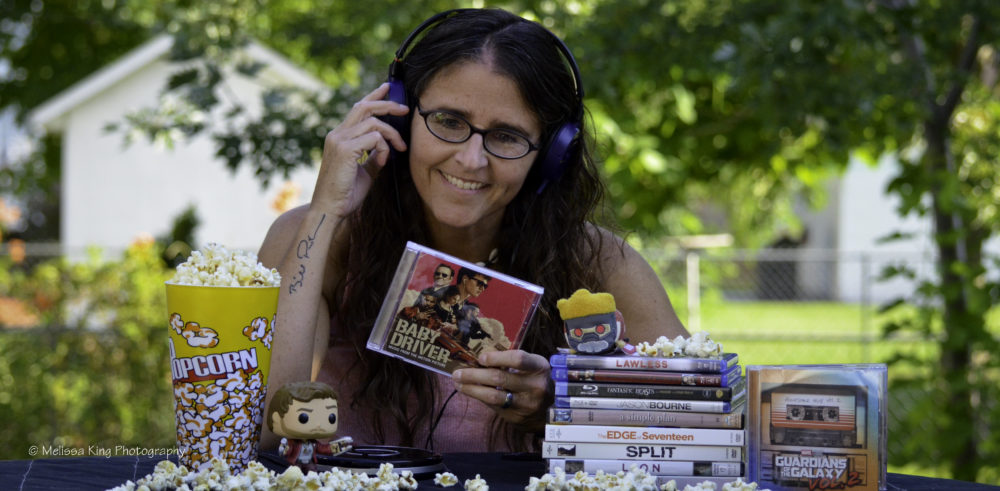 It’s been three years (that long?!?!) since I was pleasantly surprised by a movie about a little bear in the blue duffel coat and floppy red hat.
It’s been three years (that long?!?!) since I was pleasantly surprised by a movie about a little bear in the blue duffel coat and floppy red hat.
“Paddington” was released in theaters around the same time as the announcement of the 2015 Oscar nominations – which also was a time when profound, weighty dramas dominated movie screens and consumed critics’ attention.
I was writing a movie column for a central MN newspaper and had watched a seemingly endless stream of flicks that were, well… depressing (but very good, don’t get me wrong). But I needed something light to counter that overwhelming feeling of despair.
Then came “Paddington.”
I absolutely loved it, and as you can imagine I was happier than a bear with a marmalade sandwich when I heard there would be a sequel. And now it’s here, with marmalade in tow and that “hard stare” at the ready.
And its intro is a sort of flashback, giving insight into how this young bear came into the lives of Aunt Lucy (Imelda Staunton) and Uncle Pastuzo (Michael Gambon).
“If we look after this bear,” Aunt Lucy says, gazing into his adorable bear cub eyes, “I have a feeling he’ll go far.” Indeed he will.
Fast-forward to present day London. Paddington (again voiced by Ben Whishaw) is no longer in search of a home; he happily has found that with the Brown family.
The opening here finds Paddington, as he often did in the first flick, writing a letter home to Aunt Lucy to catch her up on the goings on and to set the stage for this installment’s story by reading the contents of that letter for us as we watch the Browns – Mary (Sally Hawkins), Judy (Madeleine Harris), Jonathan (Samuel Joslin) and Henry (Hugh Bonneville) – along with Mrs. Bird (Julie Walters) implement the actions described by Paddington’s narration.
We see how easily our furry hero is making friends and how nicely he’s fitting in to life in England.
And if not for Aunt Lucy, Paddington wouldn’t be where he is. So for her upcoming birthday, he wants to get her the perfect gift. After all, it’s not every day that a bear turns 100.
It has always been Aunt Lucy’s dream to visit England, so when Paddington finds a gift that would essentially bring London to her, his eyes light up with angelic excitement. Awww!
But as it turns out, Victorian steam fair actor Phoenix Buchanan (Hugh Grant, devilishly exaggerated to gratifying excellence) has an interest in this item of his own. (By the way, the initial meeting between Buchanan and Paddington is altogether darling. Have I mentioned the bear’s excitement?)
To afford the gift for his aunt, Paddington gets a job – well… jobs, which leads to all sorts of shenanigans. But before he can save enough money, this perfect gift he’s so excited to buy is stolen – gasp! – right out from under his fuzzy bear snout.
And that’s not even the worst news….
It’s no secret that sequels generally are not as satisfying as originals, but “Paddington 2” completely turns that theory on its head. I can’t even tell you how much I enjoyed this follow-up flick; it’s at least as good as the first, if not better.
The story is just as “tickety boo,” and the humor is once again refreshing and innocent, satirical and inspiring. Adults will love it as much as kids, because the jokes aren’t toned down in an effort to appeal to a younger audience; there’s some smart, sophisticated stuff here that’s highly enjoyable and legitimately funny.
Some of that is because of Paddington’s naivety and willingness to trust everyone, and a lot of it is courtesy of Bonneville’s tongue-in-cheek lines, his physical comedy or his priceless reactions to just about every situation.
Director Paul King (no relation) keeps our eyes busy with visuals that are beyond stunning; in fact, they’re looking at stunning in the rear view mirror.
There are colors – oh the colors! – so vibrant and saturated that they almost literally jump off the screen.
The unconventional techniques and camera angles are plentiful yet never boring – those obscure and magical-looking point-of-view shots, or the artistically executed time-lapse progressions, or the select focus and zooms that immediately direct our attention.
They bring a cartoony feel that’s a throwback to the stories by British author Michael Bond.
And then there’s that extraordinary sequence during which Paddington and Aunt Lucy become animated figures in a pop-up book, jumping from one scene to another as the pages turn and a new background takes shape. Are you kidding me?
This is the whimsy and creative essence that makes these movies playful, fascinating and so much fun.
Add to that the elements of mystery, intrigue and suspense, and “Paddington 2” is a true recipe for success.
Then there’s that bear.
Whether he’s helping others, insistent on playing by the rules or literally bringing color to a bland and sullen setting, Paddington’s enthusiasm will restore your faith in the world.
This time he meets some eccentric and unsavory characters, with names like Knuckles McGinty (Brendan Gleeson), Phibs (Noah Taylor), and Spoon (Aaron Neil). But even their hardened personalities are no match for Paddington’s honesty and charm – and it’s not long before he, as he always does, wins them over.
But then when watch through Paddington’s eyes the Brown family becoming smaller in the distance as he’s taken away, or when he realizes no one will be reading him a bedtime story (ohmigod!) or when he thinks the Browns have forgotten him because they don’t visit, that look of sorrow will completely crush your soul.
For a computer generated character to bring about that much emotion speaks volumes. And the soft and soothing quality in Whishaw’s voice helps make Paddington that much more endearing.
This bear doesn’t understand sarcasm, and he takes people at their word. And no matter the situation, he never forgets his manners; he’ll tip his hat to everyone, even to those least deserving – because “it’s the polite thing to do.” And because Aunt Lucy taught him to “look for the good in people, and you’ll find it.”
He really is the sweetest thing.
Paddington’s adventures are a delight, and I surely hope there’ll be more. If that requires another three-year hiatus, so be it; “Paddington 2” definitely was worth the wait.
You have just enjoyed the insights of Movie Addict Mel, a cinema dork and conversational writer. Follow her on Twitter @movieaddictmel, and “like” her Facebook page www.facebook.com/movieaddictmel. You also can email her at movieaddictmel@outlook.com.




